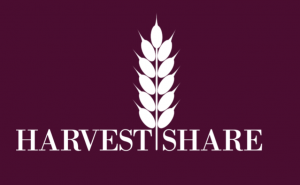What is if we could solve food insecurity and stagnating farm income with one solution? Twelve College of Wooster students working with four community advisers devised a plan to do just that.
Thirteen percent of Wayne County’s population is under the poverty line (U.S Census Bureau). This population is food insecure (Akron-Canton Regional Foodbank, 2017). While the individual poverty rate may appear low, over a quarter of children in Wooster, Ohio are below the poverty line (City-data.com). Just about that percentage of children have been identified as food insecure (Akron-Canton Regional Foodbank). At Cornerstone Elementary School, three quarters of all students are on free and reduced lunch. Poverty and food insecurity are closely linked to malnutrition. Malnutrition is especially damaging to children as they develop and learn in school.

Back Row: Ajay Bedesha, Jaxen Werne, Brandon Epton, Aziza Moore, Chris Perrin, Vedica Jha, Unnati Singhania, Monica Bongue. Front Row: Jessica Eikleberry, Komal Mesvani, Lisette Torres, Madelaine Braver, Jena Styka, and Sara Curtis.
People to People Ministries and other organizations address food insecurity in Wayne County by providing free food. Typical food that is donated is canned. It is rarely nutritious. Fruits and vegetables help children with the developmental nutrition. Fruits and vegetables are scare commodities at pantries. When it is provided, it is often the least popular item and spoils. The system in place to provide nutritious food to pantries is not as efficient as it could be.
According to the US Department of Agriculture, small and medium farm income has been stagnating. This trend has persisted for the past four years. As we interviewed farmers, we found many expressed a strong desire to not only do good for themselves, but also the community they live in.
The project we took on this spring is a little different than past ones. Instead of pairing student groups with several different organizations (one group per organization), we had four groups of students all working on different components of the same larger project. The basic idea was:
(1) Donors purchase a weekly or monthly “share” of produce from a set of local farms,
(2) Rather than going to that person (as in a traditional Community Supported Agriculture (CSA) program), the produce is delivered to the food pantry at People to People, where it is distributed as part of their regular weekly program.
We called this, “Harvest Share” – local farmers are paid for their product, and local families and their children in need have healthy nutritious food to eat.
Our team of external advisors to the project includes Sara Curtis from People to People, Jessica Eikleberry from Local Roots, Kyle Putinski from United Way, and Monica Bongue, a local farmer and currently executive director of Crown Point Ecology Center, who originated the idea several years ago. What happened to the plan we wrote? It is being implemented by a local organization, A Whole Community.

[…] Students researched and wrote a financial sustainability plan for A Whole Community, an organization that collects produce from local farmers and distributes it to local food pantries, meal serve sites, and schools. The sustainability plan also addressed issues related to inventory management to help figure out how to safely and efficiently distribute close to 91,000 lbs of food of annually to the food insecure. This project continues the work that our student undertook in 2017 to come up with the idea of Harvest Share. […]